When square-jawed actors like Brad Pitt or Johnny Depp tell the costar they know a guy, the plot usually entails a homicide or felony. So when my friend Doug leans in and whispers, “I know a guy,” I should sprint for the nearest exit. But Doug’s jaw isn’t uncommonly square, and he has no reason to believe I need to lift some diamonds or dispose of a body. I figure Doug’s guy has something to do with fishing.
“Are you kidding?” I ask Doug when he says his guy told him about a place to fish on Spruce Creek. “I don’t know, man. I’ve stopped at that river a few times to check the temperature. It boils from mid-June until the end of trout season. I’ve never seen it below 70 degrees.”
“The spot’s not at the highway,” Doug says. “This guy fished where an old train track crosses the river. He used to wear himself out catching big brook trout. `Buttloads of speckies,’ was the way he put it. He’s an old guy who hasn’t fished for years, so you’d probably have the place to yourself.”
Coaches use repetition to train athletes to react quickly and confidently when the game is on the line. The player should respond, not think. The idea is simple: clear mind—fast feet, clogged mind—slow feet. If my mind were clear and my feet fast, I’d scramble away from the pressure. But the slightest prospect of unicorns and rainbows clogs my mind and slows my feet. Doug draws a vague map in the dust on my rear window and, with that, stamps my passport for a buttload of big brook trout. What could go wrong?
Two days later, I turn from the main road onto an unimposing two-track trail. After about a mile through a field, the trail appears to end at a grove of small trees. Granting unreasonable trust in Doug’s guy, I push through the leafy wall and slog down a branch-lined tunnel where hundreds of woody fingers scratch and claw at the last layer of paint on the exterior of my truck. I reach through the window to push away the branches, and somehow none of the overhanging limbs plug the path. Driving backward through this woody tunnel would be impossible. So—if not my Waterloo—an encounter with a fallen tree would be a Pyrrhic victory at best.
Once out of the woods, the two-track ends at the shore of an ancient beaver pond spreading mainly to the south of the road’s purported path. About fifty yards ahead, the trail reappears from the water and then vanishes into another wall of trees. There’s no place to turn around, so I push ever onward. The water I drive through is a foot or two deep. But to my right, an earthen dam holds back a pond whose surface is at eye level.
When I emerge from the next woody tunnel, the road widens slightly before funneling into a bridge over Spruce Creek. I tuck my truck’s nose into a gap between two hemlocks and check my GPS. The screen shows a train track about one hundred yards to the south. A marshy swamp surrounds the creek, and downstream—to the north—lily pads mottle the river’s surface. Lily pads! The indication of a place to catch a buttload of bass, maybe, but not a buttload of brook trout. Then I see the rise of a good fish. Okay, what the hell do I know about lily pads?
About 20 feet from my car, an old trail guides me directly to the tracks. Although the rails show no signs of recent use, the bridge is in good shape, and a well-used game trail leads me to the river.
The river is as warm as bathwater, so I don’t bother taking its temperature. Instead, I cast a hopper pattern, twitch it once, then watch it disappear into the eager rise of a plump, feisty, oversized chub. I consider four possibilities:
1. Doug had hit on the guy’s wife, and I am the victim of the retribution this guy intended for Doug; or
2. Doug thought I had hit on his wife, and I am the victim of the retribution Doug intended for me; or
3. Doug’s guy failed to mention the part about the fishing being great only in early spring before the water warms; or
4. Doug’s guy failed to mention the part about the great fishing being farther upstream before the slow flows of a bayou bring the cool water to a boil.
Doug is happily married and doesn’t do the type of things that call for retribution, so I dismiss the first possibility. I’m not the cavorting sort, and Doug knows that any trip to a new remote river—fish or no fish—is something I’d enjoy, so I rule out the second possibility. There are a lot of rivers that fish well in the spring before warming in the summer, and Doug’s guy would likely assume Doug knew that, so the third possibility is highly probable. Still, my satellite map shows the beginning of the bayou no more than a mile to the south, and I can see large trees in that direction. Perhaps the shaded flows of the upper river provide refuge from the heat for a buttload of big brook trout. The river here is nearly impossible to wade, so I’ll have to walk through the surrounding woods. Again, I ask, what could go wrong?
A marshy swamp surrounds the river, and the massive beaver pond I’d driven through is about 200 yards to the west. Between those impenetrable barriers, a swath of high ground provides the path through which I hope I can walk to the place where Doug’s guy caught those big trout. I enter the woods and follow the remnants of an old trail.
I remember the first time I watched The Wizard of Oz with the audio replaced by Pink Floyd’s album The Dark Side of the Moon. I was amazed at how the music synchronized with the movie, and—like most—I believed that Waters and Gilmore had done this on purpose. Later, I learned how synchronicity exploits our tendency to see and hear patterns and connections in places they don’t exist. This is why you can synchronize any song to a sequence of photographs in a slide show. Something that, on the surface, seems like an impressive work of art is relatively easy. And this, I believe, explains how a desperate fisherman sees a random scattering of trees in the woods and thinks he’s found an old trail.
A sequence of deadfalls destroys my fantasies about a trail, and when I descend from the last deadfall, I teeter on the edge of a frog-infested swamp. I should see this impassable pit for what it is. Instead, I see another pathway. A clump of ground and sticks here, a tree trunk there, a boulder beyond that, then another lump of moss all synchronized into a footpath to my Shangri-La.
Wading through a swamp is a fantastic experience, and if I hadn’t started to think that Doug’s guy had actually described a place to get rid of a body, I might enjoy it more than I do. I step off one clump of ground, and my foot finds a solid tangle of roots and limbs no more than a foot below the slimy surface. I step off another, and I’m thankful for my waders’ last inch of height. Everywhere I step—whether on a mound of ground, a rock, or a tree root—gurgles and bubbles emerge in all directions. I am a gurgle-symphony conductor for an audience of frogs and herons. The little trees that grow out of every other clump of ground sometimes secure my balance like the rails on a stairway. But many snap off in my hand, and I wish there were an easier way to tell the difference.
After an hour in this quagmire, I find high, dry land that I hope to walk to the river. But, according to my GPS, I am farther from the river than when I first followed the Yellow Brick trail from the train tracks. Somehow, though, I stumble onto a game trail that is not a synchronized creation of my imagination. And judging by the spectacular pile of steaming shit, this actual trail was recently traversed by a giant black bear. When I see something in the scat resembling a human fingernail, I decide to return to my truck. The game trail heads toward the river in one direction and toward my parking spot in the other. Technically, I’m not giving up, I tell myself. I will come back another day and use this “trail” to find the shaded river.
As I should expect, the path toward my truck dissolves into the swamp’s edge. But a seam in the thick layer of muck on the water’s surface marks the route the bear, deer, and Bigfeet use to get through the swamp. The trail isn’t as apparent after I slither from the swamp, but the island-sized paw prints my buddy the bear had recently stamped in the ground confirm that I’m on some sort of trail.
My phone shows three bars throughout this adventure, so I don’t worry about breaking an ankle and having my demise later confirmed by the DNA from a fingernail some searcher finds in a pile of bear shit. With the find my friends feature enabled on my phone, my wife could give the rescuers exact coordinates for my extraction. If I don’t make it out, though, the old story about telling my friends not to let my wife sell my fishing gear for the price I told her I paid seems more like a wise contingency than a joke. I vow to come clean if I make it home.
Back at the truck, I remove my sweat-soaked shirt and use the driest spot to wipe off my glasses. Then I open a beer and call Doug to complain about how horrible his lead had been. I tell him about the road in, the bayou, the swamps, the bear, and the dreadful absence of trout. He asks a few questions and then laughs. “What’s so funny?” I ask.
“The guy told me about Moose Creek. What are you doing on Spruce Creek?”




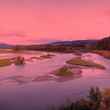
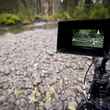
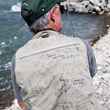




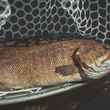
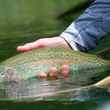



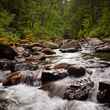



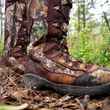
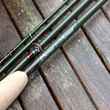
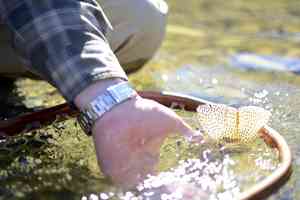
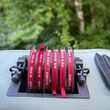

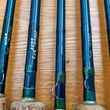
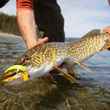

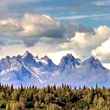
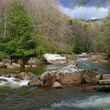
Comments